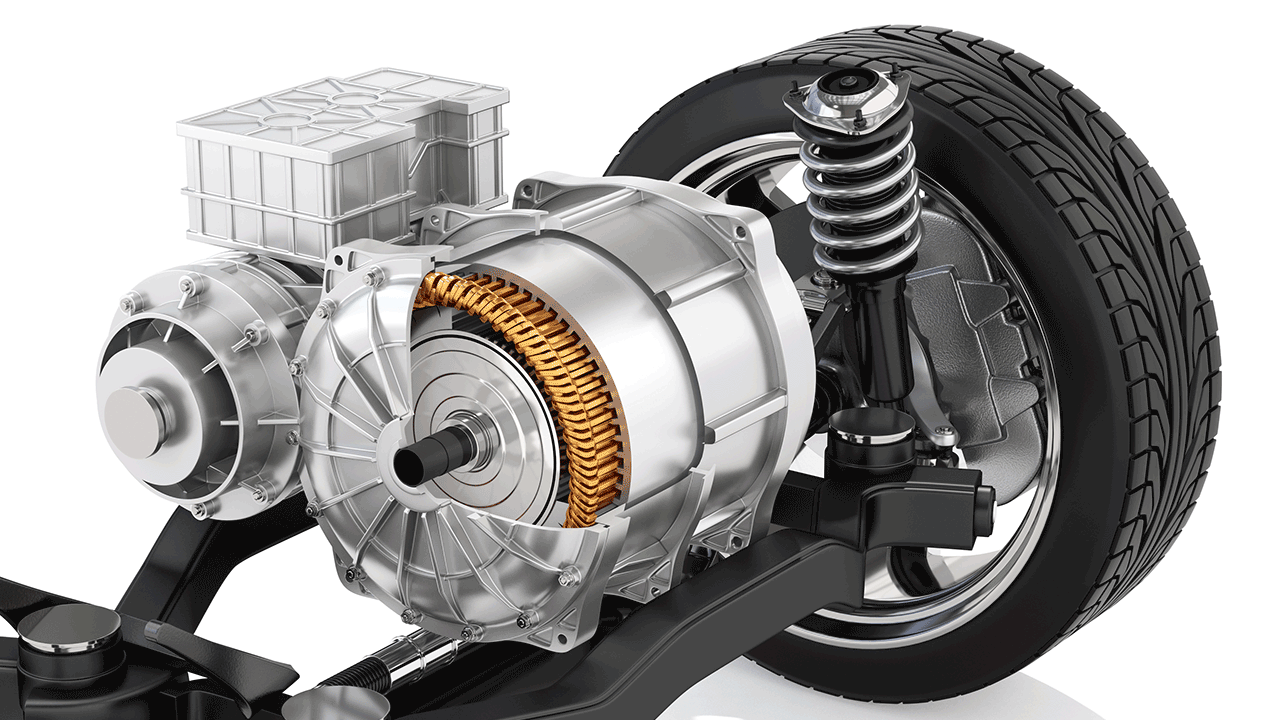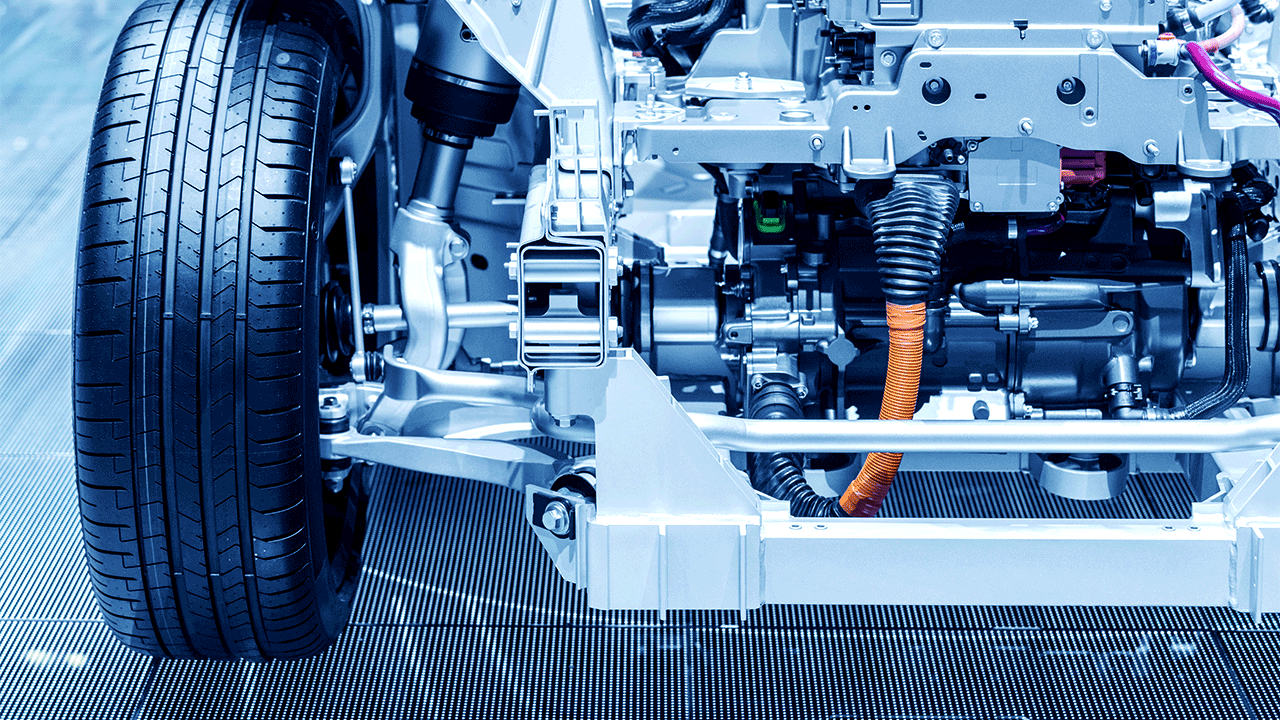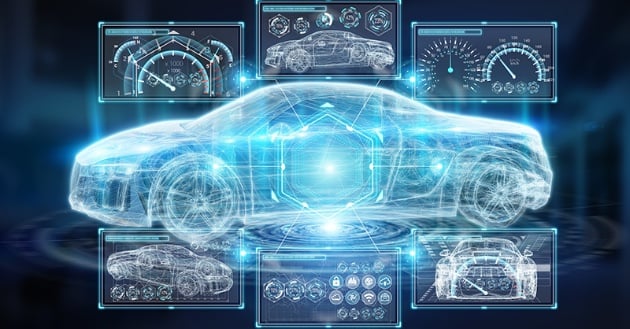Improving H/Ev Motor Control Using Simulation in LabVIEW
How to evaluate H/EV technology to improve motor control using simulation in LabVIEW One of the most integral elements of the Hybrid and Electrical...
Unlock Engineering Insights: Explore Our Technical Articles Now!
Discover a Wealth of Knowledge – Browse Our eBooks, Whitepapers, and More!
Stay Informed and Inspired – View Our Webinars and Videos Today!
Exploring the future of software-defined vehicles through expert insights.
6 min read
 Steve Neemeh
:
Jul 19, 2023 2:26:41 PM
Steve Neemeh
:
Jul 19, 2023 2:26:41 PM

In the ongoing effort to increase overall powertrain efficiency in electric vehicles (EVs), designers and engineers begin by identifying the areas of greatest inefficiency. Improving the efficiency of areas with these "power leaks" will bring the greatest gains. While important improvements have been made in recent months, the motor in general, and power inverter switching inefficiencies in particular, have been a relatively large source of loss in EVs for years.
Dealing with switching losses in inverters remains a focus of automotive component design in an attempt to increase hybrid and EV power management efficiency and improve the effective range per charge. The performance of the traction motor and drivetrain has a major effect on the available range for a given vehicle model. Early EVs had inefficient batteries, so those were the main subject of improvement efforts. The Coulometric efficiency (useful energy returned by the battery from the energy which has gone into charging it) of lead-acid or nickel-cadmium batteries was at best 70%. A change to using lithium-ion batteries solved this problem because their Coulometric efficiency is 99% or better.
Inverters and their internal switches took the place of batteries as one of the focal points for improvement efforts, and they have been the subject of ongoing work ever since. Newsletters and other publications are still predicting that inverter technology will be central to the growth of the EV market, as further switching loss solutions come to light in new design iterations[1].
Switching losses are an inevitable “slippage” that occurs when the inverter takes the Direct Current (DC) energy stored in the charged battery and turns it into Alternating Current (AC) to drive the traction motor(s) on the vehicle. Inverter bridge switches are all a type of transistor. The time it takes them to transition, and the heat generated by their state change, are the causes of the switching loss, which wastes energy and typically are the main culprits in “power leakages” at the converter and motor controller.
The inverter’s controller, or its control function working on embedded software, creates a rapid on/off switching pattern, opening and closing the inverter’s three banks of switches thousands of times per second. It must also rapidly alternate the polarity of the DC output. This is required to produce the 3-phase AC current to drive the motor and send the vehicle down the road. In addition, during regenerative activity like coasting, the motor can enter into generator mode and produce the same 3-phase AC power, which the inverter must accept, convert to DC, and output back to the battery to charge it. Whether the power is feeding “forward” or “backward” through the inverter, every opening and closing of the switches reflects a small degree of lost power. The more power is required of the motor, the faster the switches must cycle through open and closed states, generating more heat and ultimately producing greater power leakage the more power they are required to produce.
What’s inevitable about the loss in inverter switching is that there will most likely always be some loss. The quantity of that loss is not a permanent, constant, or inevitable amount. Between improvements in the design of the inverter and improvements in its embedded control software, the amount of power lost to inverter switching decreases with nearly every new iteration.
At least some of the losses in these operations are resistive and can be described by the I2R relation. This energy loss is mostly expressed as heat from the resistance in the motor’s copper windings, within the inverter itself, and in the cables between the battery, inverter, and motor.
|
I2R relation as a combination of Ohm’s Law and the Power Law (Where W=watts, V=volts, I=amperes (amps), and R=ohms) |
|
|
Ohm’s Law |
V=IR [voltage=amps x ohms] |
|
Power Law |
W=VI [wattage=volts x amps] |
|
Combined: power loss in wattage is equal to amps squared times resistance, expressed W=I2R |
|
The heat produced by this inefficiency can be significant. Inverter design has changed multiple times through the years in attempts to either better dissipate the heat, or cut the amount of heat the inverter produces.
Because it is still considered to be true that “better” switching will lead to improvements in performance, power density, and weight reduction, the push has been to create better-switching inverters.
Early attempts included adding more heat sink area to existing inverter designs to at least mitigate the amount of heat building up. These attempts were limited by factors including how compact the inverter could be made, what space there was for the inverter, its related heat dissipation or coolant pump systems, and others. Cost, or power density relative to cost, is also always a factor in integrating technology, and the ease of both design and manufacturing work that influences the cost of new iterations.
Another solution attempted was to slow down the open-and-close speeds of the bridge switches inside the inverter. While this decreased the amount of heat produced overall, it was also found that this decreased the efficiency of the switches (and by extension, the inverter), so that even less stored battery energy was making it to the traction motor.
Switch technology has seen promising improvements recently. Early EVs used metal oxide semiconductor field-effect transistor (MOSFET) switches. These and the present insulated-gate bipolar transistors (IGBTs), which offered faster switching, were based mostly on silicon and presented switching efficiency ranging from 80% in very early designs to 87-90% in more recent generations.
Another promising factor that manages to improve the range per charge without an increase in inverter efficiency is the planned introduction of higher-voltage traction batteries. Manufacturers intend to double the voltages in their next generations of EVs (from 400 volts to 800 or even higher). Doubling the voltage cuts the current in half for the same power (returning to the Power Law, where Power (watts) = Amps x Volts). This move will help keep the weight and cost of copper conductors in the vehicles as low as possible and also aid in rapid charging. Doubling the voltage will also increase the effective ranges of the vehicles, thus somewhat sidestepping the need for more efficient inverter switching in order to gain a greater range. However, these larger batteries will also be necessarily heavier and more expensive. Lingering power electronics inefficiencies and the increased weight are some reasons why this improvement alone will not produce overwhelming range increases.
Another power electronics solution that increases EV range without (as yet) adding heavier and more expensive high-voltage batteries is the introduction of silicon-carbide (SiC) based MOSFET switches in inverters, which elevate the inverter’s efficiency to roughly that of the battery, up into the 97-99% range. In the 2018 Tesla Model 3, for example, this translates to a combined battery, motor, and inverter efficiency of 97%. This vehicle was the first EV to use SiC switches and showed increased range without the additional weight and expense of the bigger battery[2]. It’s worth noting that the SiC switches are more expensive than any other switch technology option for use in traction inverters. However, their size (at 1/2 to 1/3 the weight of an inverter using silicon IGBT switches) and incredible efficiency are great benefits.
The very high efficiency of silicon carbide switches in traction inverters has become an example of a solution that creates another problem. The inverters using these switches produce so little heat that the previous iterations of cabin heating systems, which scavenged some of the heat from inverters and other electronics, cannot function properly and must be redesigned[3]. Interestingly, the research referenced here proposes to actually selectively decrease the inverter’s efficiency, in order to produce the required heat for passengers and battery packs in cold weather.

Another option that has been generating optimism is the integration of an algorithmic “soft switching” function into the inverter control. Integrating AI allows it to closely follow the output demands on the motor and inverter as well as minute changes in the inputs from the battery, calculate environmental variables, and time the inverter switches to one another so that the traction motor receives the cleanest possible AC power, free of distortion. This increases the motor’s efficiency as well.
Hard switching (non-AI) forces the inverter’s switches to actuate without necessarily timing the current and voltage waveforms, leading to a high level of switching loss and the creation of electromagnetic interference (EMI).
Soft switching with AI accounts for the timing of the current and voltage waveforms of switches in operation. This encourages them to enter a resonant state, much more efficient and with minimal EMI and minimal switching loss.
AI-powered soft switching increases battery efficiency by requiring less power to perform the same work because the power coming to the motor is cleaner. It increases the motor’s efficiency, reliability, and the actual quality of the power it produces, translating to better throttle response and overall smoothness. AI soft switching, lastly, also improves the efficiency of the inverter itself, with very small switching loss because the switching frequency is continually adjusted to the load demand in real-time[4],[5].
It is difficult to find agreement between analysts, consumers, researchers, and manufacturers on whether any longstanding issue is fully “solved,” in any industry. Most if not all of these groups are committed to a repetitive cycle of continuous improvement and making the most of every resource. However, between the coming advancements in EV range and reliability through recent and near-future innovations, it is possible that EV power electronics have improved to an acceptable point for the time being. Between the larger and more powerful battery assemblies, high-efficiency and high-power silicon carbide switches, and an AI algorithm to maximize their potential, inverter switching loss might be, if not solved, certainly greatly mitigated. Innovators in the industry may be satisfied for now with the state of inverter switching technology, and soon turn to another problem to solve, where the potential for improvement is greater.

How to evaluate H/EV technology to improve motor control using simulation in LabVIEW One of the most integral elements of the Hybrid and Electrical...

What is Electric Vehicle Functional Safety Testing? Electric vehicle (EV) technology is evolving rapidly. Additionally, the demand for these vehicles...

Recent events such as China’s plans to scrap pure internal combustion engines as soon as 2030, the release of Tesla’s Model 3, and announcements by...